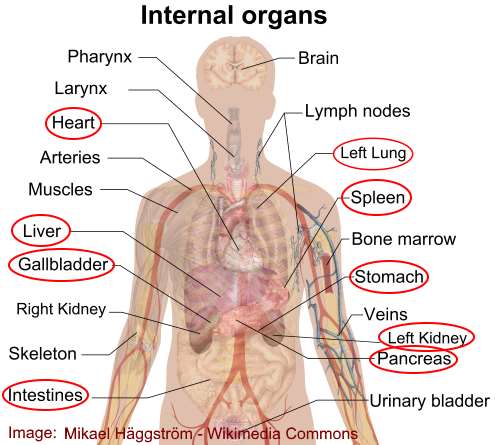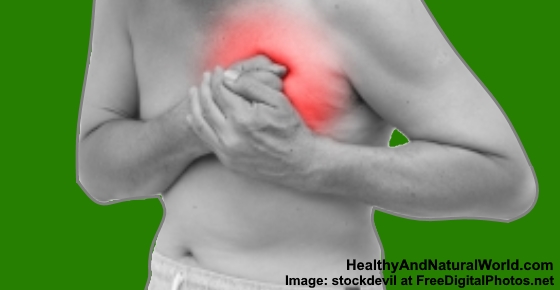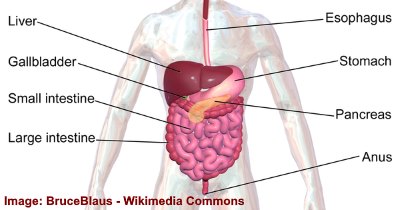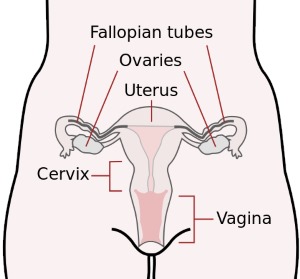Pain on Left Side: Causes, Treatments and When to See a Doctor

Any kind of acute or chronic pain in the left side of your chest or the left side of the abdomen can be a cause for concern. The left side of your upper body contains many vital organs like your heart, left lung, spleen, pancreas, part of your liver and stomach. Infection, disease, or blocked arteries can cause pain ranging from mild discomfort to sharp, stabbing pains in the left side of your body.
Pain on the left side of your body isn’t always cardiac-related or connected with an organ. Sometimes, stress or anxiety attacks can be a cause of the pain that may feel like you are having a heart attack. But you should never ignore any kind of pain in your chest or abdomen as it can be a sign of a serious condition.
In this comprehensive article on pain in the left side of your body, you will find out the various reasons why you could have aches, pains, or discomfort in the left side of your body. This will help you know what is causing the left-side pain and if it is serious enough to see a doctor. You will also find many helpful home remedies to relieve some of the causes of pains on the left side of your body.
Organs on the Left Side of the Body
Under your rib cage on the left side of your chest and abdomen are some of the most important internal organs in your body.
The heart
Your heart is located to the left of your breastbone and oxygen-rich blood is pumped from the left aortic valve to the rest of the body. According to doctors from WebMD, the left side of the heart also receives oxygen-rich blood from your lungs.1
Left lung
You left lung is located behind your heart and both of your lungs play a vital function in the respiratory system.
Spleen, pancreas, and part of the liver
Although your liver is located under the right rib cage, part of it is located on the left side just under your heart. Below your heart under the left part of your rib cage are your liver, spleen, and pancreas. These organs, along with your liver, are an important part of your digestive system and help to break down food to extract nutrients and filter out waste products.
Left kidney
Your left kidney is located towards your back and, just like the liver, helps to filter blood and keep you healthy.
Part of the stomach, intestines, and colon
Part of your stomach, intestines, and colon are also located on the left side of your abdomen. The last part of your colon is located in the lower left side of the abdomen. Usually, if you have any digestive problems, the digestive-related pain will tend to be felt on the left.
Left ovary is in the lower left side of the abdomen
Women also have part of their reproductive system on the left side of their body. For example, the menstrual cycle, ovarian cysts, and swelling in the ovaries can also be a source of pain in women if the left ovary is affected.
Diagram of Organs on the Left Side
 Symptoms of Pain on the Left Side
Symptoms of Pain on the Left Side
Depending on the exact cause of your pain, you may have various degrees of pain. Sometimes, it can also be difficult to determine exactly where the pain is coming from.
For example, pain associated with your heart can be a dull constant pain that radiates to your left shoulder and neck. But sometimes, the extreme discomfort may feel like there is a heavy weight pressing on your chest. However, if you have kidney or flank pain, you may feel this on the left or right side of your back, but the pain can also travel down to your abdomen and groin.
Inflammation of your breastbone or tissue around the heart can cause sharp pains in your left chest that feels worse when you breathe in. The inflammation can also cause dull aches in your chest that cause general discomfort.
Very often, digestive problems like constipation, excess gas, or inflammation in the intestines can cause sharp pains that seem to move around your abdominal area. However, sharp stabbing pains in the left side of the abdomen could indicate a serious problem with your spleen or pancreas.
It is also important to tell the difference between cardiac-related pain and non-cardiac pain. Stress and panic attacks can bring on painful symptoms as if your heart is about to stop beating. However, the racing heartbeat that usually comes with a panic attack can also put extra strain on your heart and cause severe aching in your left chest.
Cardiac vs non-cardiac pain
Most people associate pain on their left chest as being connected with their heart. While that is often true, not all left-sided chest pain is cardiac pain.
Doctors from the Mayo Clinic say that cardiac pain usually feels like there is an enormous weight pressing on your chest. Very often, cardiac-related chest pain travels to your left arm, and you may feel soreness in your jaw, back, and neck.2 Other symptoms of cardiac pain are cold sweats, pain that intensifies with activity, shortness of breath, nausea, and weakness.
Pain that isn’t related to your heart usually doesn’t radiate to other parts of your body and is felt in only one spot. Even though non-cardiac chest pains can be very severe, they usually get better if you change your body position. Digestive conditions like heartburn can also cause pains behind your breastbone, but you will probably also have a burning sensation in your stomach and chest.
Causes of Left Side Chest Pain – Cardiac Related
Let’s look at the various causes of pain sensations on the left side of your chest. First, we will look at serious types of chest pain that are related to your heart.
Heart attack
Feeling a severe, sharp pain on the left side of your chest is a classic symptom of a heart attack or cardiac arrest. This type of pain may come and go over a period of time or it can last for a few minutes. The cardiac pain happens when not enough oxygen-rich blood gets to your heart. According to the American Heart Association, the chest pains and tightness may start hours, days, or even weeks before the heart attack.3
Other heart attack symptoms include discomfort or pain in your left arm that possibly also radiates to your neck, back or jaw. You may also experience general discomfort in your chest, dizziness, cold sweats, or nausea and vomiting.
If your heart suddenly stops beating (cardiac arrest), this will cause severe chest pains that come on very suddenly. Both a heart attack and cardiac arrest require emergency medical treatment.
The best way to prevent a heart attack happening is to make some easy lifestyle choices. Some of these include eating a healthy diet, getting plenty of exercise, and maintaining a healthy weight.
Angina
Another cardiac-related source of pain in your upper chest is angina. Angina describes the pain caused by coronary heart disease when not enough blood is pumped into the heart. One reason for this is a blockage or narrowing of the arteries that causes poor blood circulation.
Doctors from the American Heart Association say that angina can cause squeezing pain in the middle of the chest. This can also radiate to your left arm, neck, shoulder, or jaw. Sometimes, angina chest pain is confused with heartburn pain or vice versa.4
Dr. Kathleen Romito on WebMD says that the upper body pain caused by stable angina usually goes away with rest. However, unstable angina is more serious and may lead to a heart attack.5
Another reason for having angina-related pain on the left side under your ribs is a coronary artery spasm. Dr. Michael Chen, Professor of Cardiology, says that people with high cholesterol or high blood pressure are at risk from spasms in their coronary arteries. These spasms can cause crushing cardiac pains that are very severe.6
Quitting smoking, regular exercise and enjoying a healthy diet may reduce your risk of heart disease like angina and coronary heart spasms and also improve your blood circulation.
Pericarditis
Sharp, stabbing pains in the left part of your chest could be caused by pericarditis, which is an infection of the membrane protecting your heart. Infection in the pericardial sac results in inflammation and chest pains which can come and go when you move your body.
Doctors from the National Heart, Lung, and Blood Institute say that pericarditis causes left-sided chest pain that can come on very quickly. The severe aching could also be felt in your arms and may radiate towards your abdomen. Along with the agonizing chest discomfort, many people with pericarditis also experience weakness, coughing, and palpitations.7
Myocarditis
One cause of pains in the left side of the chest that are related to your heart is a condition called myocarditis. A viral or bacterial infection in your heart muscles causes inflammation which results in painful sensations in your chest, neck, and shoulder.
Cardiologist Dr. James Beckerman from the Providence Heart and Vascular Institute says that pains typical of myocarditis feel like sharp, stabbing chest pains. You may also experience fatigue, light-headedness, have swollen joints or show signs of an infection.8
If you have sudden chest pains, especially on the left-hand side of your chest, you should see a doctor immediately.
Causes of Left Side Non-Cardiac Chest Pain
Not all chest pains under your left rib cage are connected to your heart. Lung infections, digestive disturbances, stress, and infections can all be the reasons why you have left-sided pain in your upper body.
Heartburn
Despite its name, heartburn doesn’t have anything to do with your heart but it causes pain that you feel in your upper chest. Heartburn is caused by stomach acid which escapes back up your esophagus and results in pain under your left or right side of the chest or in the center of your chest. Heartburn is sometimes referred to as acid reflux.
Dr. Jerry Balentine on MedicineNet says that chest pain and a burning sensation in the chest are the most common symptoms of heartburn. The pain caused by escaping stomach acid could also result in discomfort and pain in the abdomen. In fact, Dr. Balentine says that, on occasion, heartburn pain can be so severe that it feels like angina or a heart attack.9
To quickly get rid of the painful burning sensation in the left or right side of your chest caused by heartburn, you can try drinking water with baking soda (sodium bicarbonate). Baking soda helps to neutralize the acid in your stomach and eases the pain in your esophagus.
Gastroesophageal reflux disorder (GERD) is a more chronic form of heartburn. Gastroenterologist, Dr. Jay Marks says that GERD causes burning pain in the middle of the chest and top of the abdomen. For some people, the severe chest discomfort GERD causes can feel like an angina attack.10
Panic attack
Severe chest pains could be caused by panic or anxiety attacks. Many people confuse heart attack pain with a panic attack. In fact, Dr. Jeff Huffman reports that about 25% of people who come to the emergency department worrying about chest pains are actually having a panic attack.11
However, just because chest pains caused by a panic attack aren’t directly related to your heart, you should still see a doctor if this is your first panic attack. Dr. Huffman warns that sometimes panic attacks can lead to high blood pressure and increase the risk of cardiovascular diseases. In many cases, panic disorder affects the left side of the heart more than the right.11
There are many natural home remedies that can ease panic attacks and prevent you suffering from chest pain on the right side of your body or the left side. Very often knowing how to manage stress and anxiety properly helps to relieve the symptoms of panic disorder. You can try using some essential oils which have been proven to reduce stress, anxiety, and depression.
Stress
Stress is at the root of many ailments we suffer today and can cause tightness in your chest. Chronic stress can also lead to a greater risk of suffering from conditions that cause pain in the left side of the body. For example, prolonged emotional stress has been linked to cardiac-related chest pain, digestive problems like heartburn, and obesity.
According to Dr. Varnada Karriem-Norwood, the aches and pains that you feel on either side of your chest come from muscles that tighten up when under stress.12
Although some stress is normal in our day-to-day activities, you should find natural ways of dealing with chronic stress. Stress can raise cortisol levels in your body that end up giving you sleep problems, high blood pressure, and upset your digestive system.
Nerve damage
Nerve damage in your chest area is called intercostal neuralgia and it can cause sharp pains in your left chest if that side of your body has been affected. Damage to nerves in your chest area can be a result of shingles, an injury to one or more of your left ribs, or chest surgery.
According to the University Pain Centre Maastricht, intercostal neuralgia causes sharp, shooting pains around the chest wall. The skin on your chest may also be tender and painful to touch.13
Pneumonia
Pain in the left side of your chest or back could happen if you have pneumonia in that lung. You may develop pneumonia after having a cold, the flu, or other respiratory illness. In fact, eating foods that benefit your lungs is a great way to prevent infections damaging your lung health.
According to doctors from the National Health Service in the United Kingdom, the chest pain caused by pneumonia is usually worse when breathing or coughing. The lung infection will probably also cause difficulty breathing and you may have general signs of an infection.14
If not treated promptly, pneumonia can develop into a life-threatening condition. So, if you have stabby pains in the right side or left side of your chest when you cough and a fever with shortness of breath, you should see your doctor. Your doctor will check you for signs of a lung disease and prescribe the proper treatment.
Pleurisy
Another lung condition that can cause severe pains and aches in the right side of your chest or left-hand side is pleurisy. Depending on which lung is affected, you will feel pain under your left rib cage or your right rib cage. A viral or bacterial infection can cause inflammation in the pleura – the tissue covering your lungs and chest cavity.
Dr. Christopher Holstege on eMedicineHealth says that chest pain is the most common symptom of pleurisy. This causes a sharp, stabbing pain in your upper body that gets worse if you cough. However, sometimes the upper chest pain can be more like a dull ache.15
If you have a high fever, chills and cough up thick phlegm along with your chest pain, you should see your doctor for a full checkup. Dr. Holstege reminds patients that they should always visit their doctor if they have new chest pain.16
Other Causes of Left Side Chest Pain
There are some other reasons for having sharp pains on the left side of your chest and upper abdomen.
Excess gas
A common reason for having sharp pains in the left side of the chest is due to excessive gas. Excess gas can be caused by eating fiber-rich foods or having a digestive problem like food intolerance or irritable bowel syndrome. This buildup of gas in your intestines can press on other organs and cause discomfort, abdominal pain, and gas pain in the chest.
Dr. Matthew Hoffman on WebMD says that a gas buildup can cause uncomfortable chest aches and pains. However, this type of chest pain should go away in a short time and passing gas usually is enough to get rid of the abdominal and chest pain.17
If you are bothered by flatulence and have bloating, you can try some of my great home remedies for getting rid of gas. Gas is a natural occurrence in the body, however, there are some natural ways to help prevent too much gas.
Hiatal hernia
Chest pains just below the left rib cage could be due to a hiatal hernia (or a hiatus hernia). The function of your hiatus is to stop food going back up your gullet and it is located just behind the left side of your chest (or left breast for women).
Dr. Jennifer Robinson on WebMD says that a hiatal hernia happens when the stomach bulges through the hiatus into the chest.18 According to doctors at the British Hernia Centre, the chest pain caused by a hiatal hernia can be very severe and spread to the shoulder blades. In fact, the pain is so excruciating that many people mistake it for heart attack chest pains.19
Gastritis
The sensation of a gnawing pain at your lower left rib cage could be a symptom of gastritis. Irritation of your stomach lining caused by the Helicobacter pylori bacteria is often a cause of gastritis. However, stress, excessive use of alcohol, or regularly taking non-steroidal anti-inflammatory drugs (NSAIDs) can bring on gastric abdominal pain.
Dr. Jerry Balantine on eMedicineHealth states that the pain gastritis causes can affect the lower chest area and upper abdominal region. Sometimes, the pain can be felt strongly in the back and ranges from a dull abdominal ache to cutting pains that cause great discomfort.20
There are many natural treatments to get rid of H. pylori stomach infections and reduce the inflammation and painful symptoms. For example, many studies have shown that Manuka honey has antibacterial properties and can help to destroy the H. pylori bacteria in the stomach. The soothing effect of honey on the stomach will also help to stop the pain.
Breast cancer
It is very rare that breast cancer causes pain under the left breast or right breast. According to researchers at Cancer Research UK, breast pain isn’t usually associated with breast cancer and about 90% of breast lumps are not cancerous.21
However, on rare occasions, pain under your left breast or right breast could be a sign of advanced breast cancer. Pain in your upper chest area can happen if the cancer has spread to the lungs and causes secondary complications like chest infections or a buildup of fluid in the pleura. However, you will have many more symptoms than just chest pain.22
If you find any new lump in your breast, you should always visit your doctor for a full checkup.
Causes of Left Side Abdominal Pain
Many digestive problems or urinary tract infections cause pain below the chest in your abdomen. Here are some of the causes of left side abdominal pain.
Constipation
Lower left side abdominal pain can be caused by a hard buildup of stool in your colon that is a sign of constipation. Constipation can be caused by several underlying health problems, but the most common cause of it is not eating enough fiber in your diet. Usually, the abdominal pain that constipation causes goes away when you have a bowel movement.
Dr. Melinda Ratni on WebMD says that being constipated will cause belly pain and may also be a reason for a swollen abdomen.23 However, it is not just pain in your abdomen that is a result of constipation. According to the journal Pediatric Pulmonology, constipation can also cause chest pains and even respiratory problems.24
One of the best natural remedies to relieve constipation is to eat plenty of fiber. Other natural laxatives to give you needed relief are prunes and drinking aloe vera juice to loosen stools.
Constipation is also one of the causes of lower back and stomach pain.
Diverticulitis
Another issue with your digestive system that can cause pain in your lower left abdominal area is diverticulitis. An infection in your digestive tract can make small pouches called diverticula to form. These small bulging sacs can cause fever-like symptoms along with pain in your abdomen that can last for several days.
According to doctors from the Mayo Clinic, diverticulitis causes aches and pains in the lower left side of your abdomen.25 They recommend exercising regularly and eating a healthy diet with plenty of fiber to help reduce your risk of developing diverticulitis.
Kidney stones
Kidney stones will very often cause sharp, stabbing pains in your lower abdomen. If the mineral buildup is in your left kidney, you will feel kidney pain or left flank pain that can be felt anywhere between the lowest rib and the buttocks. The pain may also radiate to the groin, abdominal area or the lower back to the left or right of the spine and above the hips.
Along with the severe lower left abdominal pain, staff from the Mayo Clinic say that the pain can come in waves. This usually happens as the kidney stones move through the urinary tract. However, you may also have pain when urinating and your urine may be a cloudy or pink color with a foul odor.26
There are many ways to help get rid of kidney stones naturally and remove the source of your abdominal pain. For example, apple cider vinegar can help to dissolve stones in your kidney. All you need to do is mix 1 to 2 teaspoons apple cider vinegar in a 6-oz. glass of water and drink frequently throughout the day.
Enlarged spleen
Your spleen is an essential organ located on the left side of your body. The spleen helps to keep your blood healthy and protect you from infections. You will have severe abdominal pain if your spleen becomes enlarged for some reason.
Dr. Carol DerSarkissian on WebMD says that an enlarged spleen can be caused by infections, liver diseases, rheumatoid arthritis, or injury. It’s not always the case that an enlarged spleen causes abdominal pain. However, it if does, you will most likely feel the pain on the upper left side of your abdomen. In some cases, the abdominal pain will spread to your left shoulder.27
Pancreatitis
Any inflammation in your pancreas will cause aching pains in your upper left abdomen just below your ribs. Your pancreas works along with your liver to help the body digest food. Gastroenterologist, Dr. Subodh Lal says that some of the most common reasons for pancreatic pain are gallstones and drinking too much alcohol.
Dr. Lal says that the abdominal pain on your left side will be constant and become more severe as the pancreas becomes more inflamed. You may also notice that the pain gets worse when you have eaten a fatty meal or when you lie down. Pancreatitis also causes pain to radiate to your left shoulder and through to your back.28
Pancreatitis needs to be treated by doctors. Doctors from the Mayo Clinic say that once the inflammation has gone down, doctors recommend eating a bland diet to allow your digestive system to recover. After that, it’s important to stop drinking alcohol and quit smoking to prevent recurrence of pancreatitis.29
Irritable bowel syndrome (IBS)
Irritable bowel syndrome is a chronic digestive problem that can cause abdominal pain, especially in the left area of your abdomen. Depending on the severity of your condition, the abdominal pain IBS can cause ranges from a mild ache around the stomach to severe pain throughout your digestive system.
According to Dr. Jenifer Kehrer who works as a gastroenterologist, irritable bowel syndrome causes lower abdominal pain, particularly in the lower left quadrant. Pain in the left abdomen is often felt after meal and passing stool usually relieves the pain.30
Dr. Kehrer also says that, if IBS causes a buildup of excess gas in your intestines, you may suffer from pain in the upper left area of your chest.
If you suffer from irritable bowel syndrome, please read my article on how to treat IBS with natural home remedies. There, you can find out how peppermint, aloe vera, and other herbs can help manage your IBS symptoms.
Causes of Left Side Abdominal Pain in Females
There are some causes of pain on the left side of your body that only affect women because the aches and discomfort are connected with the reproductive system.
Mittelschmerz
Mittelschmerz is pain in the lower abdominal region that often occurs along with the menstrual cycle. Your ovaries are located in your lower abdomen and any pain from your ovaries will be felt below your belly button. Other names for Mittelschmerz are “mid-cycle pain,” or “ovulation pain.”
Dr. Frederick Gaupp on eMedicineHealth says that the abdominal pain happens because blood irritates the lining of the abdominal cavity. The pain can happen on either side of the lower abdomen and you could have left-sided abdominal pain every second month when the left ovary produces an egg.31
Some women only report about having a mild twinge below their belly button at the middle of their cycle. Others say that they have intense abdominal pain on the side of the affected ovary that lasts for several days.
Ovarian cysts
During the menstrual cycle, small sacs develop in the ovaries and can fill with fluid. These ovarian cysts are usually painless and quickly disappear. However, if they continue to fill with fluid, the cysts will start causing pain in your pelvic region below your belly button. If the cysts are in your left ovary, you will feel lower abdominal pain on the left side. You may also suffer from other symptoms of ovarian cysts.
As well as abdominal pain, Dr. Sarah Marshall on WebMD says that the cysts may make you urinate more often and cause changes in your menstrual period.32 However, if you start having severe lower abdominal pain with nausea or vomiting you should call your doctor. Also, if your periods have become more painful during the last 3-6 months you should speak to your gynecologist about it.33
Pain on the Left Side – When to See a Doctor
As we have seen in this article, the causes of pain in the left side of your upper body, chest, and abdomen are varied. Dr. Jennifer Robinson on WebMD warns that chest pain or abdominal pain that persist and isn’t helped by home remedies could be a sign of a serious health issue.34
You should see a doctor for pain and discomfort that you feel in your upper left chest or left abdomen if you also have one or more of these symptoms:
- You have tightness or a feeling of crushing pressure in the middle or left side of your chest.
- Pain in your chest or abdomen radiates (spreads) to your arms, neck, jaw, back, or groin.
- Pain anywhere in your rib cage and under your breastbone comes on suddenly when you are resting.
- Along with the chest or abdominal pain, you have a rapid heartbeat, nausea, dizziness, or vomiting.
- Nothing helps relieve pain under your left breast (for women).
- Coughing is painful and you bring up green-colored mucus.
- You have vaginal bleeding or spotting along with lower abdominal or pelvic pain (for women).
- Your blood pressure is either very high or very low.
Read these related articles:
- Seven Types of Pain You should Never Ignore
- 10 Signs of a Heart Attack Never to Ignore
- Left Side Chest Pain: Causes and When to See a Doctor
- Left Side Pain During Pregnancy: Is Left Side Pregnancy Pain Serious?
Article Sources



